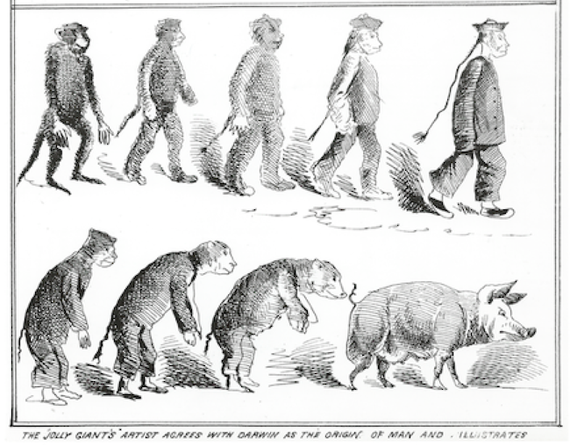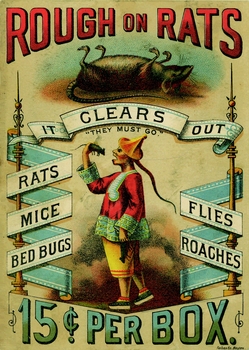On Speciesism and Xenophobia
by Wen Liu
語言:
English /// 中文
Translator: Minmin
ON OCTOBER 5TH, mainstream media outlets reported on a Chinese woman carrying her child who was defecating in front of Burberry on the streets of Oxford, England. The picture would become widely circulated on Twitter in the UK. Shanghaiist uploaded a geographical map of the mall where the incident took place, and indicated that the nearest public toilet was only a few meters from this mother and child. The fact that the toilet was near reveals how the Chinese tourists lack the “habitus” to be behave in a civilized manner.
Shanghaiist even included the hashtag “#touristsbehavingbadly,” where most of the related tagged pictures were of Chinese tourists defecating in public spaces, public nudity, or sitting on top of landmark statues. Defecating in front of a branded boutique seems to contrast with the “rise of China” and economic prosperity; where even if the wealth accumulated in China has allowed the middle class to enjoy the life of luxury, within this discourse, it would be suggested they have not yet achieved the level of Western civilization. This is a means by which colonial discourse and discrimination against the Chinese finds new forms of expression in the age of globalization.
The privacy of excrement and genitalia have been used by civilized beings to differentiate themselves with animals, in the context of speciesism. However, the animalization of people of color as uncivilized and barbaric, especially the animalization of the Chinese people, is not new in history. Since the end of the 19th century, Western colonial discourse has viewed people in East Asia as a “Yellow Peril” that is a threat to Western countries. To them, Asians were not just eyeing on their vast wealth and riches, but also a species that is of a uncivilized, lower class. At around the same time, a large wave of Chinese immigrants moved to the West Coast of America to help build railways, working as coolies, one of the most degraded form of labour. But from 1875, the government enforced a series of “Anti-Chinese” policies, such as the Chinese Exclusion Act, as part of a discourse in which Chinese people are described analogous to partially evolved monkeys, filthy and corrupt rats or bastards, or invasive octopus. The prevalence of this analogy further points to how Orientalism and speciesism refers back to what Peter Singer argued, which is that human and non-human beings are differentiated through moral standards.
Animal Discrimination and Animal Protection
IN HER BOOK, Animal Lessons, Kelly Oliver discusses how speciesism, since the dawn of Enlightenment, has been the centre of thought in the domain of the philosophy of ethics. She argues that the ethics for animals, cannot only be dependent on the concept of “animal rights” where animal rights activists seeking protection for animals. Because animal rights is only an extension from “human rights,” whose logic depends on a special stature given to the human “species”and enjoyed only by the human species in Western philosophy. In other words, the discourse of animal rights does not transform the anthropocentric foundation of human rights, but merely creates a special category for certain animals–mostly domesticated ones–to be protected under the beneficence of human beings.
 Photo credit: “Thistleton’s Jolly Giant, The Critic,” Vol. 2, No. 19, February 21, 1874
Photo credit: “Thistleton’s Jolly Giant, The Critic,” Vol. 2, No. 19, February 21, 1874
In the discussion of speciesism, the difference between human beings and non-human beings not only lies within the domain of human versus animals, but also between an even more complicated stratification of “man,” “sub-humans” and “animal.” The category of human subject historically did not mean the inclusion of all human beings, but only a selected strata of free, autonomous white man who owned property. Through delineating itself from people that are unable to control their body, as the irrational woman, people of colour, and animals, the ideal Cartesian subject dominates nature and is rational and without the burdens of body. Following this logic, the human subject in the context of Western philosophy needs to denigrate other species, conceptualizing other beings as the subhumans and animals in order to constitute its own existence.
Therefore, simply extending human rights onto specific kinds of animals (where most often the ones we consider as pets) cannot resolve the problem behind speciesism. Till today, the treatment of other animals by humans involves the technologies of surveillance, governance, and exploitation, such as factory farming and laboratory animal testing. These actions continuously reflect the means by which the humans in power deal with other subhumans: mass incarceration of people of colour, assisted reproductive technology and sweatshop labour. However, animal rights activists only fight for the cause of specific types of animals–the ones that are attributed with human characteristics like cats and dogs. This is similar to the logic of liberalism, where human rights that are traditionally assigned to middle-class, white men are extended to a specific group of women in the context of gender equality reform, while continually marginalizing other populations; viewing them as needing discipline and the “appropriate” subject to tame.
 Photo credit: Phillip Chen/WNYC
Photo credit: Phillip Chen/WNYC
Raising a recent issue that happened in Taiwan: On October 2nd 2015, the Animal Rights Group in Taiwan held a press conference condemning Vietnamese migrant workers for torturing and killing cats and dogs and calling for the arrest of these migrant workers under animal protection laws. Mayor of Taichung City, Lin Chia-Lung, would on October 13th post on Facebook, stating that the guilty migrant workers had been arrested, stressing that workers would never be allowed to return to Taiwan with very harsh language.
In the course of these events, Southeastern migrant workers had been already labeled as ’Other’ by Taiwanese, never mind that they had no way of defending their actions. The label of “uncivilized” was directly attached to them and they were pushed out from the boundary of human. The racism of Taiwanese separates the public between a dichotomy of “loving animals” and “cruel to animals,” to rationalize their racism against the Other with the discourse of protection and animal rights. Despite the fact that these events have instigated so much sentiment for animal welfare and human rights, we rarely reflect on how the labor law itself is quite exclusive and discriminatory in addressing problems of social stratification, or how the mass factory reproduction and laboratory animal testing should also be condemned. The logic of protection under animal rights is really about control and discipline, but not about overturning the stratification between animals and humans.
Tourists Behaving Badly
AS A TAIWANESE living in the United States , especially in New York City where tourists fills the city all year round, Taiwanese around me often fear being stereotyped as an “uncivilized Chinese tourists”. The incident in front of Burberry and the Vietnamese migrant workers led to much anxiety in this regard, but what we often do not realize is that this is a product of our speciesism. Our so-called civility precisely relies on displacing others into the category of “uncivilized animals” and the conception that those who abuse or hurt animals are inhuman, without ever reflection on our own reinforcement of this social stratification.
Singer’s discussion of speciesism and Oliver’s animal pedagogies, describe how this logic of stratification reflects an entrenched colonial mindset and an retrogressive , conservative way of thinking. The segment between human and non-human is never clear cut. If people care about the equality of humans and animals, it should not simply be about promoting the adoption of “stray” dogs and cats, or to love those animals who resemble ourselves, but to understand the continuum that exists between every social group; for example, “Westerners/Easterners,” “Citizen/Non-Citizen,” “Han/Non-Han”, etc. To achieve social justice and justice for animals, we must ultimately challenge this stratification between categories of “Human” and “Non-human”.



